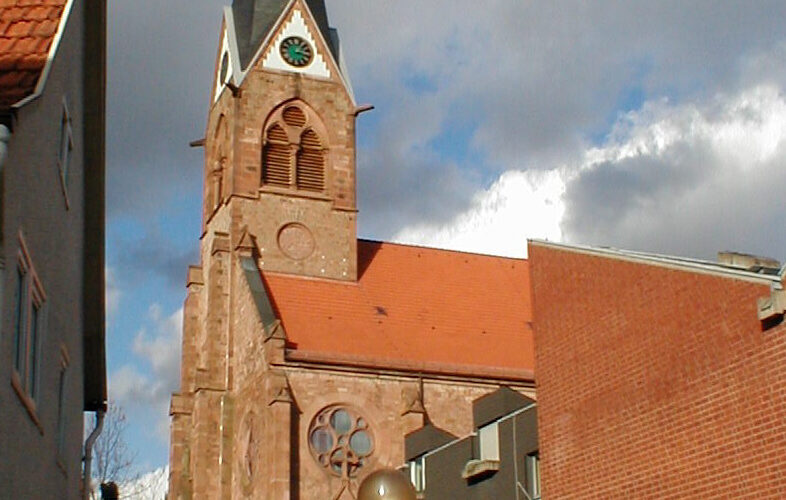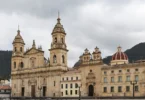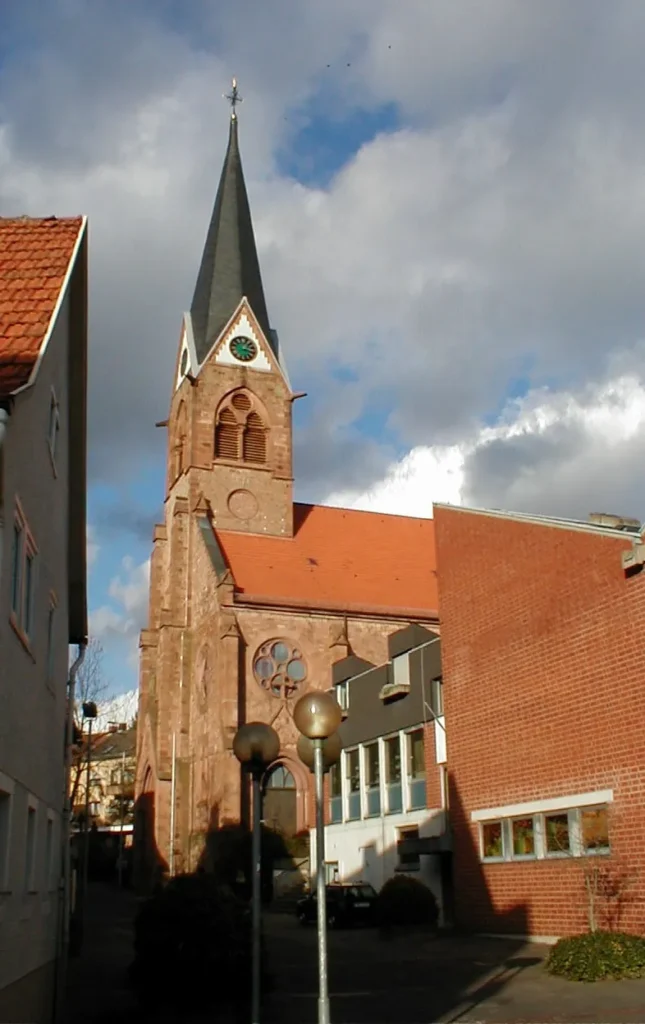
Introduction
Maria Geburt , also Mariä Geburt , is a Catholic parish church built in 1894/95 in the Aschaffenburg district of Schweinheim. Ecclesiastically, Schweinheim belonged to the Aschaffenburg parish of Our Lady . The first chapel in Hain, as Schweinheim was then called, dates from around 1660. It was 40 feet long, 32 feet wide, 25 feet high, the choir 10 feet deep, and covered with tiles with a ridge turret with two bells. The patron saint of the church was St. Alban of Mainz , whose memorial day is celebrated on June 21st. In 1756, the church was rebuilt and expanded; the foundation stone was found when the church was demolished.
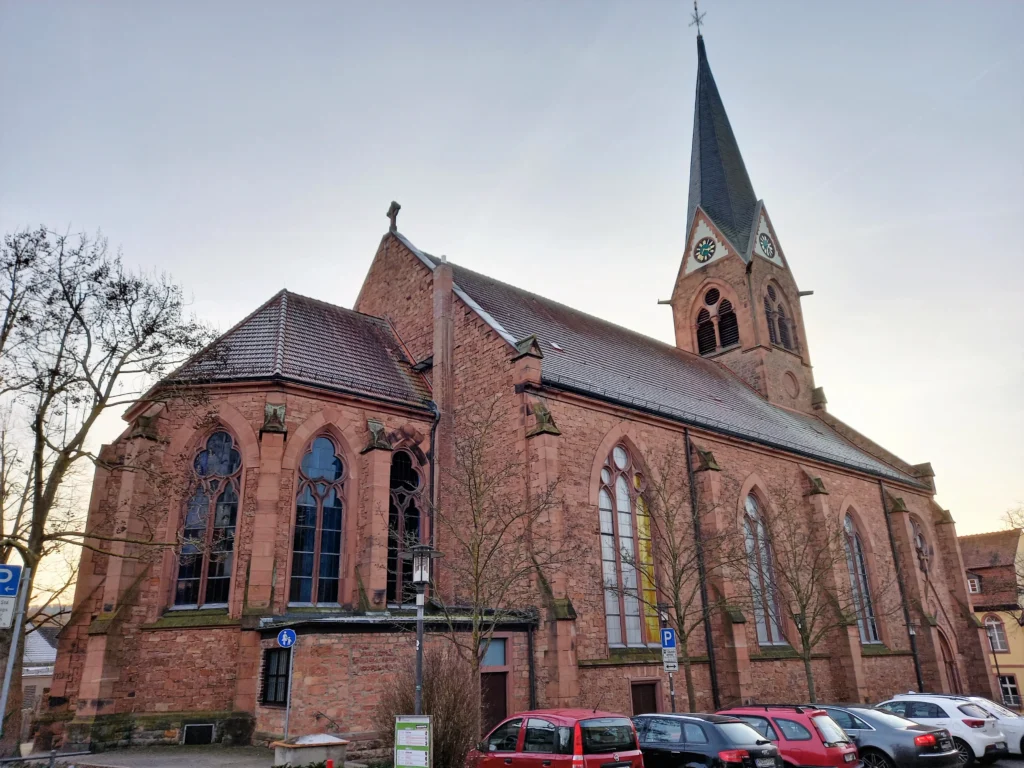
Ecclesiastically, Schweinheim belonged to the Aschaffenburg parish of Our Lady . The first chapel in Hain, as Schweinheim was then called, dates from around 1660. It was 40 feet long, 32 feet wide, 25 feet high, the choir 10 feet deep, and covered with tiles with a ridge turret with two bells. The patron saint of the church was St. Alban of Mainz , whose memorial day is celebrated on June 21st. In 1756, the church was rebuilt and extended; the foundation stone was found when this church was demolished.
New Church Building from 1894/95
After extensive planning by the Aschaffenburg architects and building contractors Franz and Roman Wörner, the foundation stone of the Church of the Birth of Mary was laid on June 10, 1894. Just three months later, on the Feast of the Nativity of Mary (September 8), the topping-out ceremony took place on the tower. The neo-Gothic hall church made of red and white sandstone has four supporting pillars, is 43 m long, 18 m wide, 12.50 m / 14.50 m high and has a 57.90 m high tower. The altars, pulpit, communion bench and choir stalls were made by Bruno Link in Stockheim near Mellrichstadt . The colored glazing of the windows was made in the workshop of Hermann Beiler in Heidelberg . The choir arch cross was created by the Schiestl brothers in Würzburg. The figures of saints from the old church were also put up. Altar cloths, vestments and canopies were made by the local Poor School Sisters, and the community had a special benefactor in the Archbishop’s Spiritual Councillor Adalbert Huhn, parish priest at the Holy Spirit Church (Munich) , whose father had been born in Schweinheim. A Gothic monstrance, ciboriums, candlesticks and some vestments came from there.
Architecture of St. Maria Geburt, Aschaffenburg, Germany
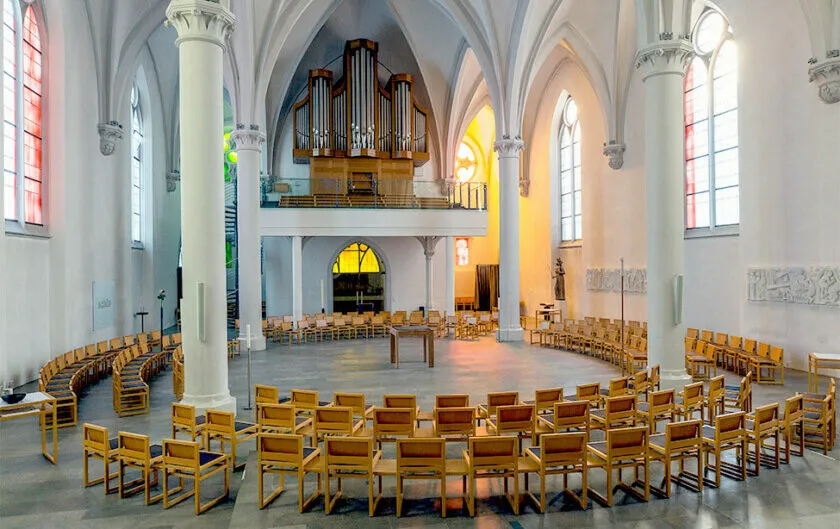
In 1955, the interior of the church was redesigned in accordance with liturgical developments. A high altar in the form of a table was set up, and the central window in the choir was designed by the young artist Friedrich Höfer from Bensheim . The other church windows were created by local artists.
The church was “de-Gothicized” in 1961 and completely redesigned in 1999 according to the overall concept of the Viennese sculptor and artist Leo Zogmayer. All windows and liturgical objects were designed specifically for this room in a highly reduced formal language. It is a bright room that allows those entering to breathe space and freedom, clarity and openness. It is ideal for liturgical and cultural gatherings as well as for meditation .
The Madonna, an early Baroque work, comes from the Loretto Chapel of the Capuchin monastery in Mainz , which was abolished by the French in 1802. It was installed in the old Schweinheim church in 1805.
Patronage
The patronage of the parish of the Nativity of Mary reads in the original Latin: Nativitatem Virginis Mariae celegremus Christum eius filium adoremus Dominium .
Pastor Schweinfest placed all of his concerns regarding the construction of the church under the protection and intercession of Mary, and in particular the memorial day of the Nativity of Mary. He therefore ensured that all of the important events surrounding the construction of the church were linked to this memorial day.
Bells
Since Corpus Christi (8 June) 1950, five bells have been ringing in the tower. They were cast from “Brilon special bronze” on 19 May 1950 in the Albert Junker bell foundry in Brilon and consecrated on Whitsunday (28 May) by Vicar General Vinzenz Fuchs from Würzburg.
Organ
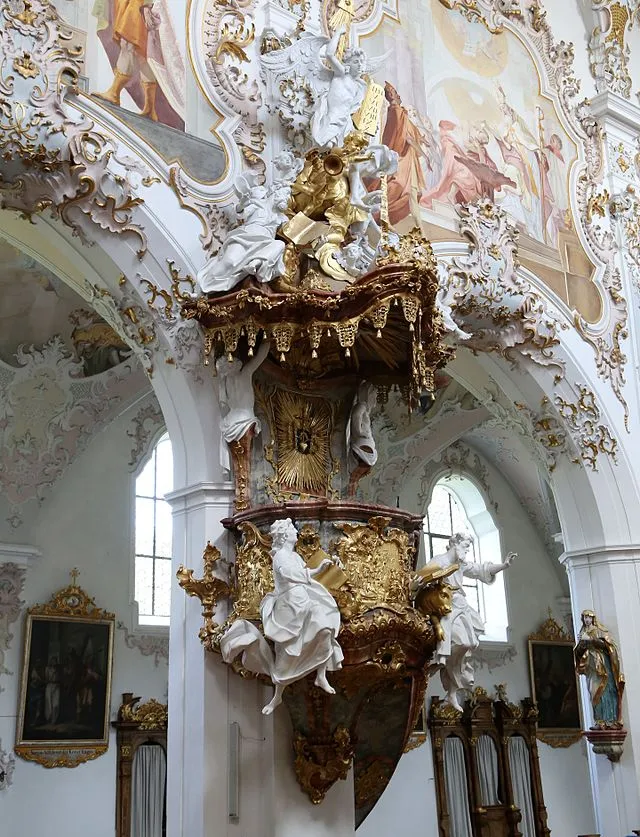
On the organ loft there is a piece by the Orgelbau Vleugels company in Hardheim , which, according to regional cantor Peter Schäfer, Klingenberg am Main , was put out to tender in 1986 and installed in the summer of the same year. The organ was consecrated on October 9, 1988.
The organ has a total of 1,802 pipes. The smallest pipe is 9 millimeters long and weighs 8 grams. The largest pipe is 4.30 meters long and weighs 118 kilograms. The organ has slider chests, mechanical action and mechanical/electrical stop actions, setters, standard couplers and a playing niche.
The new facade was designed by Ottmar Schimmelpfennig. Three trapezoidal towers, bordered on the outside, are connected to each other by harp-shaped flat fields. The closed case made of solid oak has veils made of lattice-like ornaments. The organ is now in the tower chamber. During the remodeling in 1999, the extended gallery was rebuilt back to the central nave. The organ itself did not have to be dismantled during the redesign of the interior; the veils were removed.
The organ is primarily used to provide the musical accompaniment to all liturgies throughout the year. Since 2012, it has been used in a very unusual way in the AUDINOVA “Concert Series for New Music”, in which only compositions from the 20th and 21st centuries are played. The composer and organist Dominik Susteck from Cologne regularly takes part in this series.
Feast Day
Feast day : 8th September
The feast day for St. Mary’s Birth, also known as the Feast of the Nativity of the Blessed Virgin Mary, is celebrated on September 8. This feast commemorates the birth of Mary, the mother of Jesus.
Church Mass Timing
Our Mass Schedule as follows:
Daily Mass: 7:00 am
Saturday Evening: 5:30 pm
Sunday: 7:30 am, 9:30 am, 11:30 am
Church Opening Time
Monday : 10:00 a.m. – 12:00 p.m.
Tuesday, Thursday : 3:00 p.m. – 5:00 p.m.
Contact Info
Address:
Marienstraße 13, Aschaffenburg, Germany
Phone: +49 6021 93263
Accommodations
Connectivities
Airway
Frankfurt (FRA) Airport to Church Nativity of Mary Aschaffenburg, Germany distance 41 min (47.6 km) via A3
Railway
Obernau Train Station to Church Nativity of Mary Aschaffenburg, Schweinheim 13 min (6.3 km) via Maintalstraße

